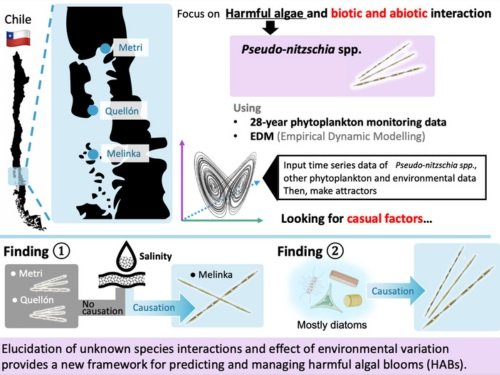A new guide on the monitoring of toxin-producing microalgae was released by UNESCO’s Intergovernmental Oceanographic Commission (IOC) and the UN International Atomic Energy Agency (IAEA) to foster the effective management of harmful algal blooms (HABs).
HABs constitute a serious threat to public health as well as coastal and marine development. Reports on the socio-economic impacts of HABs from around the globe are increasing in parallel with increased tourism, aquaculture exploitations and artisanal fisheries. Observations on HAB occurrences and associated biotoxins can be used as valuable data to document and understand both natural and human-driven changes in ecosystems.
Prompted by the concerns of countries about the increasing impacts of HABs, this guide was devised as a tool to strengthen countries and marine professionals’ capacity to control and mitigate the consequences of harmful algal blooms. The guide is an introduction to basic analytical techniques for designing sampling protocols of microalgae and biotoxin vectors such as fish and shellfish.
The Guide for Designing and Implementing a Plan to Monitor Toxin-Producing Microalgae is a collaborative product of IOC UNESCO and the IAEA, within the context of the international programme on HABs established by the IOC in 1992.
The full guide in available in both English and Spanish.
For more information, please contact: Henrik Enevoldsen (h.enevoldsen@unesco.org)
Reference (open):
Reguera, B., Alonso, R., Moreira, A., Méndez , S., Dechraoui-Bottein, M.-Y. (Eds). 2016. Guide for designing and implementing a plan to monitor toxin-producing microalgae. 2nd Ed. Intergovernmental Oceanographic Commission (IOC) of UNESCO and International Atomic Energy Agency (IAEA), Paris and Vienna.
IOC Manuals and Guides, no. 59. 66 pages
http://unesdoc.unesco.org/images/0021/002145/214510e.pdf
Stay Always Informed
Join our communities to instantly receive the most important news, reports, and analysis from the aquaculture industry.
Editor at the digital magazine AquaHoy. He holds a degree in Aquaculture Biology from the National University of Santa (UNS) and a Master’s degree in Science and Innovation Management from the Polytechnic University of Valencia, with postgraduate diplomas in Business Innovation and Innovation Management. He possesses extensive experience in the aquaculture and fisheries sector, having led the Fisheries Innovation Unit of the National Program for Innovation in Fisheries and Aquaculture (PNIPA). He has served as a senior consultant in technology watch, an innovation project formulator and advisor, and a lecturer at UNS. He is a member of the Peruvian College of Biologists and was recognized by the World Aquaculture Society (WAS) in 2016 for his contribution to aquaculture.


